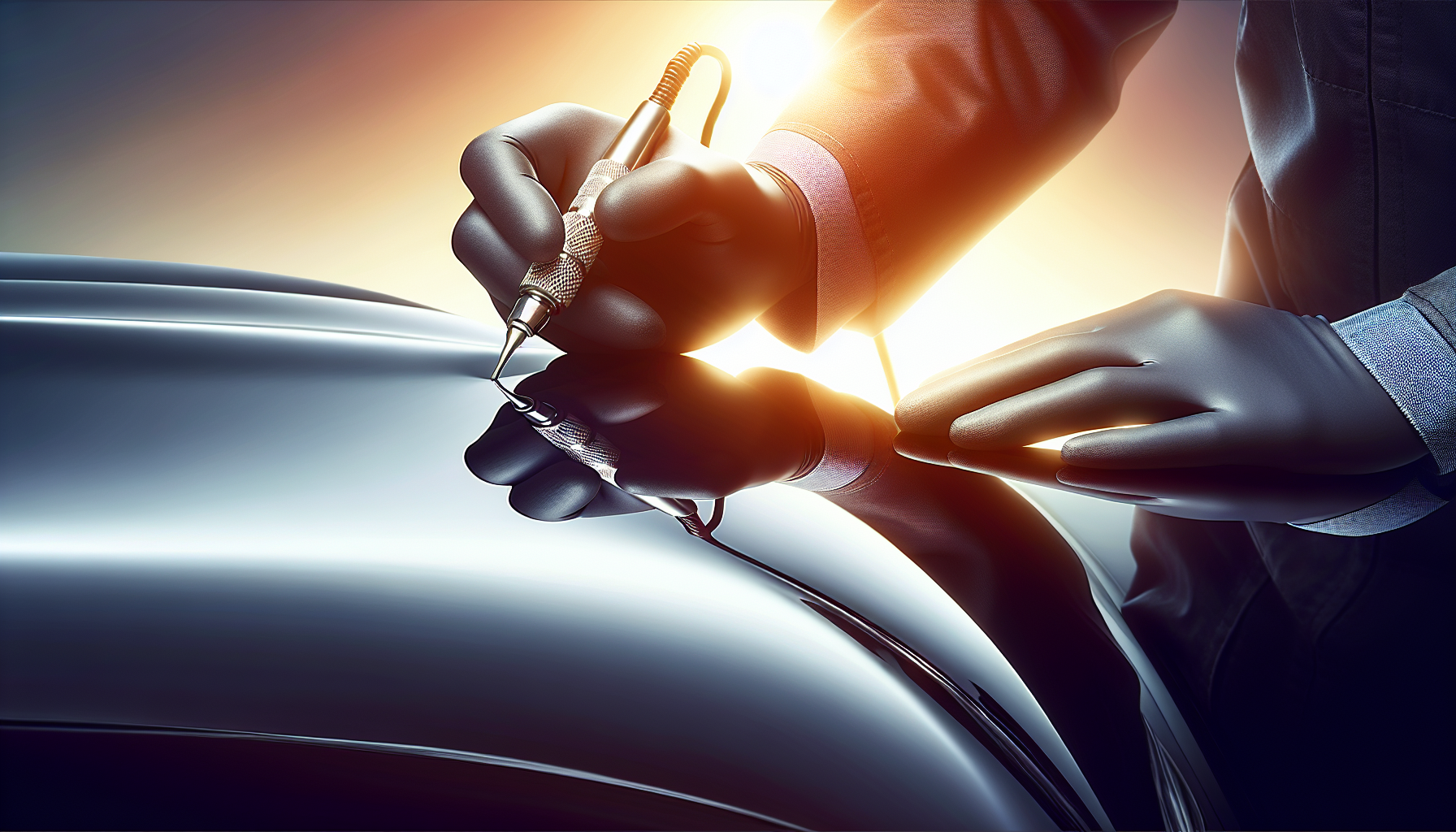# Mastering Dent Repair with a Slide Hammer: A DIY Guide for Auto Body Enthusiasts
When tackling **DIY dent repair** at home, selecting the right **tool** can make all the difference between a botched job and a professional-looking finish. One of the most versatile and powerful pieces of **equipment** for removing dents, especially stubborn ones on car panels, is the slide hammer. Below, you’ll find a detailed, step-by-step guide on how to use this indispensable tool to restore your vehicle’s body to its pristine condition.
What is a Slide Hammer and Why Use It for Dent Repair?
A slide hammer is a hand-held tool designed to deliver strong, controlled impacts that help pull out dents and deformations on metal surfaces. Its design features a weighted sliding handle that moves along a shaft and, when pulled sharply away from the attached dent-puller, generates force to coax dents outward. Unlike suction cup pullers, the slide hammer can attach to various pulling tabs or hooks, making it effective on dents that are too deep or irregular for conventional tools.
Here’s a direct look at a [typical slide hammer tool](https://www.toolots.com/media/catalog/product/cache/1/image/600×600/9df78eab33525d08d6e5fb8d27136e95/s/l/slide_hammer_pull_kit.jpg) to help you visualize what we’re working with.
Why the Slide Hammer is Essential for DIY Dent Repair
– **Powerful pulling force:** Ideal for dents caused by minor collisions or parking lot mishaps where metal may be folded inward.
– **Versatility:** Works with different attachments suitable for oddly shaped dents or areas hard to reach.
– **Precision:** The craft of controlled hits lets you pull dents out step-by-step without overly stressing the panel.
– **Cost-effective:** A reusable investment that cuts down on costly professional body shop bills.
Damage Types Best Suited for Slide Hammer Repair

This tool excels at pulling out dents where the metal has been pushed inward but not severely creased or torn. It works beautifully on:
– Medium-sized rounded dents
– Minor collision dents on doors, fenders, or trunk lids
– Areas where paint remains intact and only surface-level metal distortion occurred
For deep creases or complicated multi-layer damage, specialized metal shaping tools might be needed alongside or after slide hammer work.
Difficulty Level: Intermediate
Using a slide hammer requires a fair amount of hand-eye coordination and patience. While not highly technical, beginners must be careful not to over-pull, which can warp the panel further. With practice, your accuracy and gentle control will improve quickly.
—
Step-by-Step Guide: Using the Slide Hammer for DIY Dent Repair
### 1. Assess the Dent and Prepare the Work Area
Before you start, examine the dent closely. Confirm paint isn’t cracked or peeling — if it is, pulling might worsen the damage. Clean the damaged area with soap and water, then dry it thoroughly. Setting up good lighting helps you see dent contours clearly.
### 2. Select the Appropriate Attachment
Slide hammers typically come with a range of attachments such as:
– Pulling tabs: Adhesive or welded depending on method
– Hooks: For edges or open holes
– Clamps: To grip panel edges securely
For most typical dents, an adhesive pulling tab provides the best combination of strength and minimal panel damage. Clean the surface with isopropyl alcohol to ensure strong adhesion.
### 3. Attach the Pulling Tab to the Dent
Attach the pulling tab directly over the center of the dent. Press firmly and allow adhesives to cure as recommended—usually 10 to 15 minutes. Skipping curing time can cause tabs to pull off mid-repair.
### 4. Connect the Slide Hammer to the Pulling Tab
Once the tab is secured, hook the slide hammer onto it. Make sure the connection is tight and the tool’s shaft is oriented straight from the car surface for maximum pulling efficiency.
### 5. Begin Gentle Pulling
Hold the slide hammer firmly with both hands. Slowly slide the weighted handle towards the main shaft end, then forcefully pull it back toward you in one swift motion. This action generates the “hammering” force necessary to pull metal outward.
**Tip:** Start with gentle pulls to test the metal’s response. Abrupt, heavy pulls risk tearing paint or elongating the dent.
### 6. Observe and Adjust
After each pull, inspect the dent’s progress. The dent should gradually rise closer to the panel’s original contour. If the dent’s edges begin to flare out or the metal thins excessively, stop pulling and move to a different spot on the dent or switch the attachment type.
### 7. Remove the Pulling Tab and Clean Surface
Once you’re satisfied with the dent’s pull-out, remove the pulling tab by softening the adhesive with a heat gun or adhesive remover. Clean any residue without scratching or damaging the paint layer.
### 8. Finish the Surface Repair
Even after pulling dents out, the panel may have small imperfections. Use light sanding and body filler sparingly to smooth out any uneven spots before repainting or clear coating as needed.
—
Additional Tips for Slide Hammer Dent Repair Success
– Always wear protective gloves and eye protection to guard against flying tabs or debris.
– Practice on scrap metal or less visible car areas to get a feel for the tool’s force.
– Use clamps or supports to stabilize larger panels while pulling to avoid unwanted flexing.
– For stubborn dents, slowly increase pull force over multiple sessions rather than trying to fix it with one big yank.
– Pair slide hammer work with traditional body hammers and dollies to refine shape after pulling.
—
Mastering the slide hammer as your go-to **equipment** for **DIY dent repair** opens up a whole world of confident **auto body** fixes. This tool equips you to tackle dents that suction cups and simple knockback tools can’t handle, giving your vehicle a polished, professional finish right at home. Remember: patience, proper technique, and respect for the metal all lead to success. Grab your slide hammer, roll up your sleeves, and reclaim that flawless car surface!




